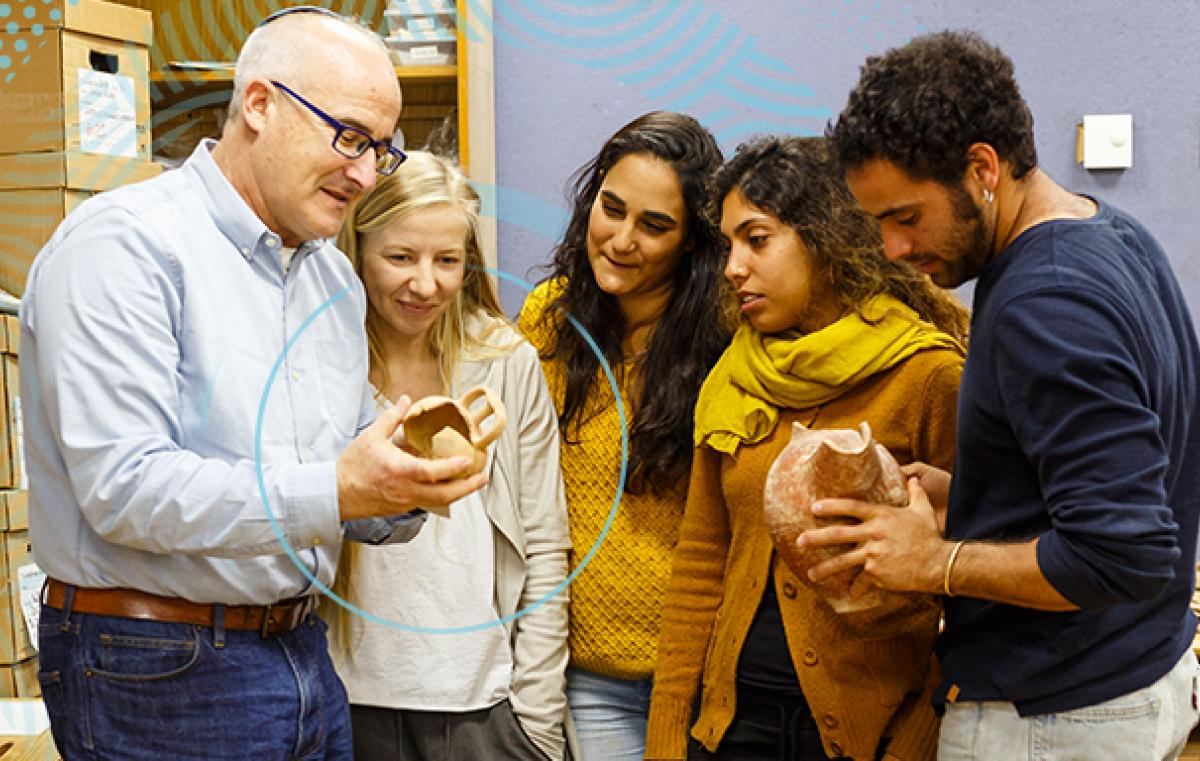25 Years of Excavations at Tell-es-Safi/Gath
Over the years, the Tell-es-Safi project has uncovered important archaeological finds, including the remains of a city gate of the Philistine city of Gath, the earliest known siege system in the world, and hundreds of other well-preserved artifacts

Every summer, for the past 25 years, a large group of students, researchers and volunteers from Israel and abroad has been excavating at the archaeological site of Tell-es-Safi, situated between the Israeli cities of Ashkelon and Beit Shemesh. This summer, the team, led by Prof. Aren Maeir, of the Martin (Szusz) Department of Land of Israel Studies and Archaeology, held the project’s last excavation season. Research at the site will continue in the coming years, but if further excavations are carried out, the scope will be limited.
Throughout the 25 years of excavation at the site, fascinating finds from different periods and cultures have been discovered, including the remains of the Philistine city of Gath, hometown of the biblical Goliath. Among the finds were temples, public structures, a city gate, residential and cultic areas, many hundreds of well-preserved artifacts, and the earliest known siege system uncovered in the world. The finds made it possible to reconstruct the history of the site from the Early Bronze Age (third millennium BCE), through the Biblical period, to the present day.
Prof. Maeir relates: “Over the last quarter of a century, some 4,500 volunteers, students and archaeologists, from Israel and the world, took part in the excavations. During this time, some 15 different excavation areas – including about 100 excavation squares - were opened. We ‘moved’ many hundreds of square meters of dirt, and discovered thousands of diverse finds, some of which are displayed in museums. We forged scientific collaborations with some 30 academic and scientific institutions in Israel and worldwide, and about US $8 million were allocated to the excavation project from competitive research grants from granting agencies in Israel and around the world (e.g., the United States, Canada, Germany, Australia, and England).
To date, two volumes of the final report have been published, as well as some 150 articles, which have appeared in scientific and popular platforms around the world, describing the research conducted on the finds. Over the years, Prof. Maeir has appeared in dozens of television shows, documentaries and YouTube video clips, and has talked about excavation-related subjects. His Tell-es-Safi/Gath Archaeological Project Weblog has received more than 800,000 visits over the years.
To mark the completion of the excavations, the 2021 Tell es-Safi/Gath Archaeological Project team performed the “Gath Jerusalema Challenge” – dancing to the music of the worldwide smash-hit song and dance, Jerusalema.